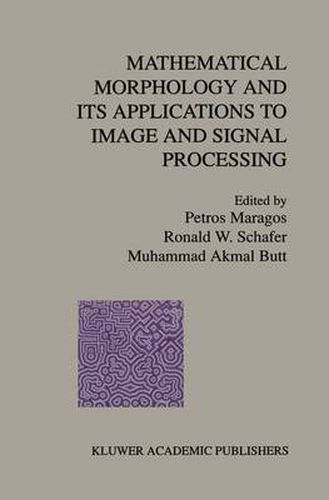Readings Newsletter
Become a Readings Member to make your shopping experience even easier.
Sign in or sign up for free!
You’re not far away from qualifying for FREE standard shipping within Australia
You’ve qualified for FREE standard shipping within Australia
The cart is loading…






This title is printed to order. This book may have been self-published. If so, we cannot guarantee the quality of the content. In the main most books will have gone through the editing process however some may not. We therefore suggest that you be aware of this before ordering this book. If in doubt check either the author or publisher’s details as we are unable to accept any returns unless they are faulty. Please contact us if you have any questions.
Mathematical morphology (MM) is a powerful methodology for the quantitative analysis of geometrical structures. It consists of a broad and coherent collection of theoretical concepts, nonlinear signal operators, and algorithms aiming at extracting, from images or other geometrical objects, information related to their shape and size. Its mathematical origins stem from set theory, lattice algebra, and integral and stochastic geometry. MM was initiated in the late 1960s by G. Matheron and J. Serra at the Fontainebleu School of Mines in France. Originally it was applied to the the analysis of images from geological or biological specimens. However, its rich theoretical framework, algorithmic efficiency, easy implementability on special hardware, and suitability for many shape-oriented problems have propelled its widespread diffusion and adoption by academic and industry groups in many countries as one among the dominant image analysis methodologies. The purpose of this work is to provide the image analysis community with a sampling from the current developments in the theoretical (deterministic and stochastic) and computational aspects of MM and its applications to image and signal processing. The book consists of the papers presented at the ISMM'96 grouped into the following themes: + Theory + Connectivity + Filtering + Nonlinear System Related to Morphology + Algorithms/Architectures + Granulometries, Texture Segmentation + Image Sequence Analysis Learning + Document Analysis Applications.
$9.00 standard shipping within Australia
FREE standard shipping within Australia for orders over $100.00
Express & International shipping calculated at checkout
This title is printed to order. This book may have been self-published. If so, we cannot guarantee the quality of the content. In the main most books will have gone through the editing process however some may not. We therefore suggest that you be aware of this before ordering this book. If in doubt check either the author or publisher’s details as we are unable to accept any returns unless they are faulty. Please contact us if you have any questions.
Mathematical morphology (MM) is a powerful methodology for the quantitative analysis of geometrical structures. It consists of a broad and coherent collection of theoretical concepts, nonlinear signal operators, and algorithms aiming at extracting, from images or other geometrical objects, information related to their shape and size. Its mathematical origins stem from set theory, lattice algebra, and integral and stochastic geometry. MM was initiated in the late 1960s by G. Matheron and J. Serra at the Fontainebleu School of Mines in France. Originally it was applied to the the analysis of images from geological or biological specimens. However, its rich theoretical framework, algorithmic efficiency, easy implementability on special hardware, and suitability for many shape-oriented problems have propelled its widespread diffusion and adoption by academic and industry groups in many countries as one among the dominant image analysis methodologies. The purpose of this work is to provide the image analysis community with a sampling from the current developments in the theoretical (deterministic and stochastic) and computational aspects of MM and its applications to image and signal processing. The book consists of the papers presented at the ISMM'96 grouped into the following themes: + Theory + Connectivity + Filtering + Nonlinear System Related to Morphology + Algorithms/Architectures + Granulometries, Texture Segmentation + Image Sequence Analysis Learning + Document Analysis Applications.